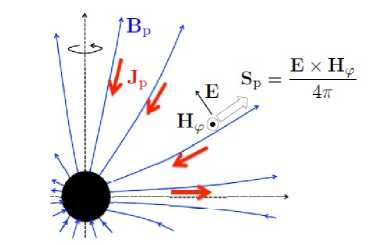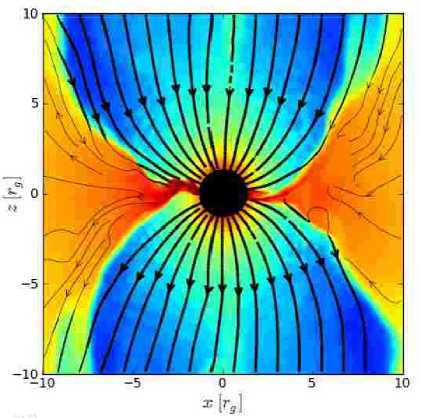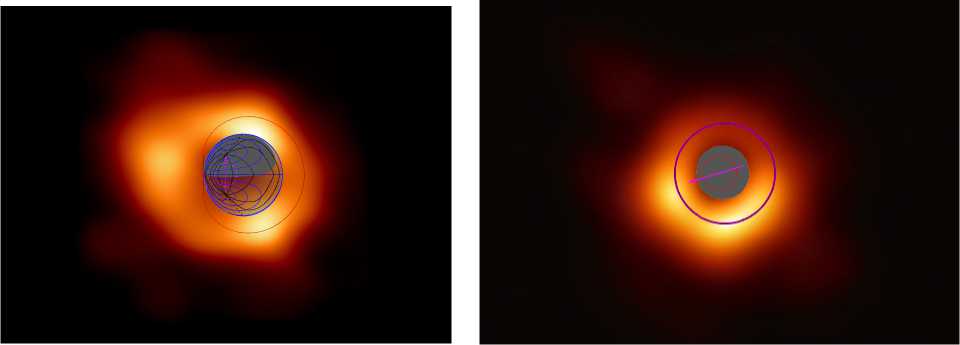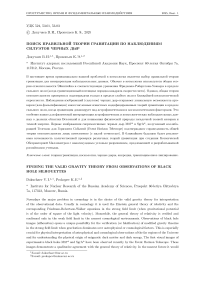Finding the valid gravity theory from observations of black hole silhouettes
Автор: Dokuchaev V.I., Prokopev K.E.
Журнал: Пространство, время и фундаментальные взаимодействия @stfi
Статья в выпуске: 1 (50), 2025 года.
Бесплатный доступ
Nowadays the major problem in cosmology is in the choice of the valid gravity theory for interpretation of the observational data. Usually in cosmology it is used the Einstein general theory of relativity and the corresponding Friedman-Robertson-Walker equations in the strong field limit (when gravitational potential is of the order of square of the light velocity). Meanwhile, the general theory of relativity is verified and confirmed only in the weak field limit in the nearest cosmological environments. Observations of black hole images (silhouettes) opens a unique possibility for the verification (or falsification) of modified gravity theories in the strong field limit when gravitation dominates over astrophysical or cosmological factors. This is especially crucial for physical interpretation of astrophysical and cosmological observations of the far regions of the Universe and for understanding the physical origin of enigmatic dark matter and dark energy. The first visual images of supermassive black holes M87* and SgrA* have been observed recently by the Event Horizon Telescope. These images demonstrate a qualitative agreement with the general theory of relativity. In the nearest future it would be possible to quantitatively scrutinize the known modified gravity theories after construction of the Space Millimetron Observatory with nano-arcsecond angular resolution.
Gravitation theory, cosmology, black holes, gravitational lensing
Короткий адрес: https://sciup.org/142244076
IDR: 142244076 | УДК: 524, 53.01, 53.03 | DOI: 10.17238/issn2226-8812.2025.1.84-87
Текст научной статьи Finding the valid gravity theory from observations of black hole silhouettes
Recent observations of visual images of supermassive black holes M87* at the center of the giant elliptical galaxy M87 and SgrA* at the Center of our native Milky Way Galaxy by collaboration Event Horizon Telescope (EHT) open unique possibility for verification (or falsification) of modified gravity theories in the strong field limit when gravitation dominates over astrophysical and cosmological factors. Verification of modified gravity theories is crucial for physical interpretation of astrophysical and cosmological observations of the Universe and for understanding the physical origin of enigmatic dark matter and dark energy.
Scrutinizing the modified gravity theories would be possible after construction of the Space Millimetron Observatory with nano-arcsecond angular resolution, which was proposed and developed by scientists in Russia.

Blandford-Znajek (1977) process
Fig. 1. Astrophysical Case 2. GRMHD accretion simulations. Accretion disk is very luminous at vicinity of event horizon. Radiation from both the outside and inside photon spheres r ph = const. The Blandford-Znajek (1977) process is a suitable model for the General Relativistic Magnetohydrodynamics accretion onto black holes, in which the inflowing plasma is strongly heated even in the vicinity of event horizon by the radial electric current and Poynting energy flux. J.C.McKinney, A.Tchekhovskoy, R.D.Blandford (2012).

GRMHD accretion simulations
Physically distinct astrophysical cases 1 and 2
Shapes of black hole images depend on the distribution of emitting matter around black holes. There are two physically distinct astrophysical cases.
Astrophysical Case 1: Radiation outside photon spheres, when there is luminous background far behind the black hole, which is a capture photon cross-section in the black hole gravitational field. Classical black hole shadow is viewed in this case [1].

SgrA* spin a = 1
M87* spin a = 0.75
Fig. 2. Superposition of the observed silhouettes of the supermassive black holes SgrA* and M87* with the numerically modelled dark spots in the case of thin accretion disk.
Astrophysical Case 2: Radiation inside photon spheres, when there is luminous accretion inflow near the black hole event horizon. Event horizon shadow is viewed in this case, which is a lensed image of the event horizon globe [2]– [9]. The Blandford-Znajek [10] mechanism (process) is a suitable model for this case. The Blandford-Znajek mechanism is confirmed recently by simulations on supercomputers [11]. See Fig. 1 for illustration of the Blandford-Znajek mechanism. Respectively, the superposition of the observed silhouettes of the supermassive black holes SgrA* and M87* with the numerically modeled dark spots in the case of thin accretion disk is shown in Fig. 2.
Conclusion
Observations of black hole images opens unique possibility for verification (or falsification) of modified gravity theories in the strong field limit when gravitation dominates over astrophysical factors. Verification of modified gravity theories is crucial for physical interpretation of astrophysical and cosmological observations of the Universe and for understanding the physical origin of enigmatic dark matter and dark energy. Visual images of supermassive black holes M87* and SgrA* have been observed recently by the collaboration Event Horizon Telescope. Scrutinizing the modified gravity theories would be possible after construction of the Space Millimetron Observatory with nano-arcsecond angular resolution.


